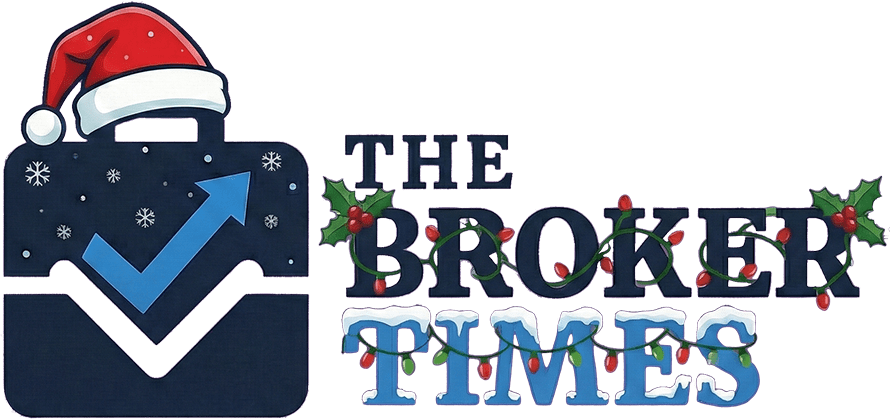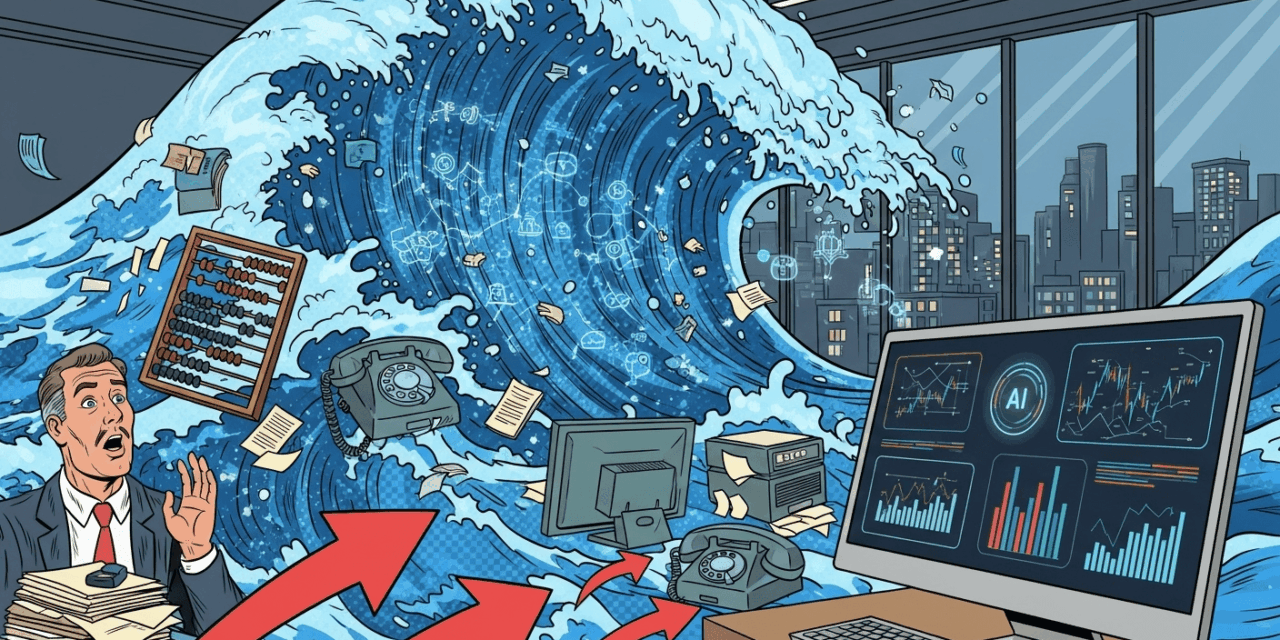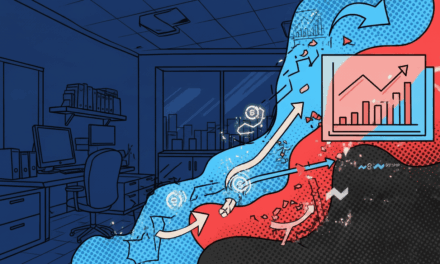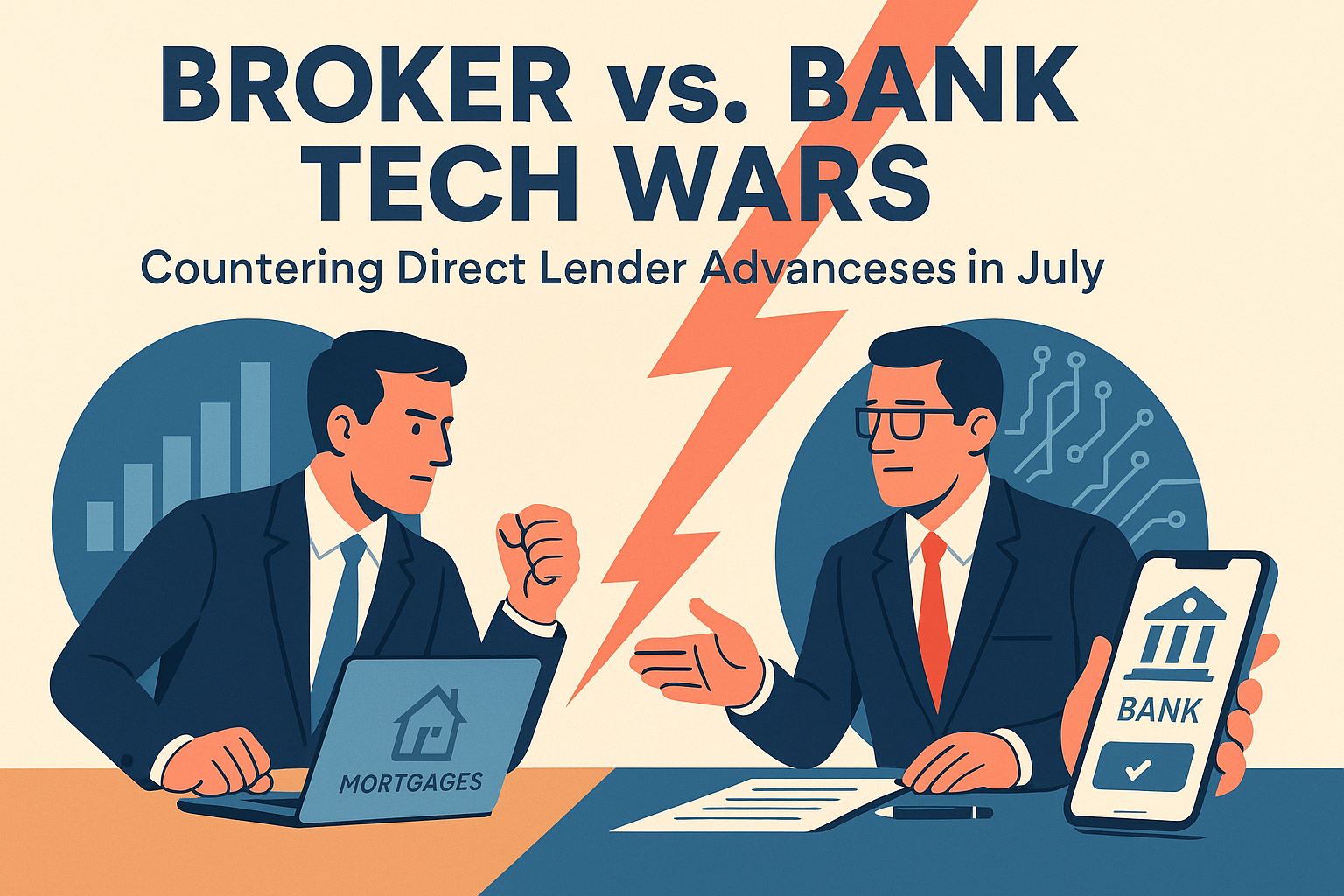Too Busy to Read? We’ve Got You.
Get this blog post’s insights delivered in a quick audio format — all in under 10 minutes.
This audio version covers: The Refinance Tsunami: How to Leverage AI & Data to Win the Next Wave
The Refinance Tsunami: How to Leverage AI & Data to Win the Next Wave
The Australian mortgage market is on the cusp of a significant transformation, and what lies ahead is not merely a repetition of past cycles but a proving ground for the future of lending. The impending “Refinance Tsunami” of 2025 and 2026 presents a critical moment for mortgage brokers, driven by a new set of economic and technological forces. While new loan commitments for dwellings rose in the June quarter of 2025, with a notable 1.9% increase in volume and a 2.0% increase in value, the market is poised for a major shift as a period of monetary easing begins.1 The PEXA Group’s Mortgage Insights Report identified a decline in overall refinancing activity in fiscal year 2024 after the expiration of a high volume of fixed-rate loans, but the June 2024 quarter saw a notable increase in refinancing volumes, signaling a new dynamic.2 The catalyst for this new wave is the Reserve Bank of Australia’s (RBA) series of rate cuts in 2025, which saw the official cash rate reduced three times by August, reaching 3.60%.3 This has been followed by forecasts from major banks like CommBank, ANZ, NAB, and Westpac for further cuts in late 2025 and into 2026, which is expected to stimulate increased borrowing and refinancing activity.3
Part 1: The New Tsunami: Why This Refi Wave is a Different Beast
This economic shift fundamentally differentiates the current wave from the refinance booms of the past. The 2020-2021 cycle was a reactive event, spurred initially by the pursuit of historically low, “rock-bottom” interest rates during the pandemic.5 This was followed by a subsequent surge in activity driven by the widespread fear of impending cash rate hikes, prompting a rush to lock in long-term fixed rates.6 The primary driver for borrowers during that period was a reactive, rate-focused mindset. In contrast, the 2025-2026 cycle is a strategic, sustained marathon rather than a short-term, event-driven sprint. The RBA’s recent actions and the ongoing forecasts for further rate reductions indicate a systemic, long-term shift in monetary policy, creating a multi-year trend that requires a proactive, automated strategy to capture. A broker who approaches this period with the same manual, ad-hoc methods of 2020 will find themselves ill-equipped to handle the sustained volume and competition. The focus is no longer just on securing a better rate but on leveraging speed, explainability, and sophisticated fraud detection to build a durable business that can withstand new digital threats. This transition transforms the refinance opportunity from a tactical deal-making exercise into a strategic imperative for long-term business growth.
| 2020-2021 Refinance Cycle | 2025-2026 Refinance Wave | |
|---|---|---|
| Primary Driver | Reactive rush for rock-bottom rates or fear of rate hikes. | Proactive response to sustained monetary easing. |
| Borrower Mindset | Reactive and primarily rate-focused. | Proactive and value-seeking (speed, trust, advice). |
| Broker Challenge | Managing high volume and manual paperwork. | Managing volume, retention, and digital competition. |
| Broker Focus | Securing short-term deals and maximizing new loans. | Building long-term client relationships and retention infrastructure. |
Part 2: The Proactive Broker: Winning Client Retention with AI
The central challenge for mortgage brokers in this new era is not just attracting new clients but retaining their existing ones. The industry widely acknowledges that it can cost up to five times more to acquire a new client than it does to keep an existing one, making client retention a fundamental driver of profitability.19 A core problem driving client churn is the “loyalty tax,” where existing customers are often charged a higher interest rate than what a bank offers to new borrowers.20 This creates a significant risk for a broker’s trail book, as clients can easily be lured away by a slightly better rate from a competitor. Traditionally, managing this risk has been a manual, time-consuming process.19
—Part 3: Battling the Invisible Threat: First-Party Fraud
The modern lending landscape is not only shaped by economic cycles but also by a growing and often invisible threat: first-party fraud. This type of fraud, as defined by a FICO consumer fraud survey, occurs when a borrower intentionally misrepresents their own financial position or personal details for financial gain.7 This is distinct from third-party fraud, which involves a stolen identity.8 The prevalence of this dishonesty is particularly concerning in Australia. The FICO survey revealed that nearly one-third of Australians (29%) believe it is acceptable or common practice to inflate income on a mortgage application, with this figure rising to over half (52%) among Gen Z.7 This disturbing shift in attitudes appears to be a direct consequence of the cost-of-living crisis and financial strain on households.7 Specific examples of this type of fraud include overstating self-employment earnings, understating living expenses, or omitting debts to improve a loan application’s chances of approval.8
Mortgage brokers are uniquely positioned at a delicate nexus in the lending ecosystem, acting as both a trusted advisor to their client and a due diligence gatekeeper for lenders. This dual role creates a unique vulnerability. A report from AUSTRAC identifies that the use of brokers and aggregators “diminishes the oversight” that lenders have over customer identification and document-verification procedures.10 This has historically created a point of failure, with several identified cases of brokers themselves submitting fraudulent loan applications with falsified documentation.10 While this is a small minority, it highlights a broader challenge: the industry has faced a trust deficit where brokers are sometimes seen as a vulnerability in the fraud chain. For brokers today, heightened diligence is no longer a mere compliance exercise but a professional imperative to demonstrate their value as transparent, secure, and ethical originators. By proactively addressing the threat of fraud, brokers can rebuild trust with both clients and lenders, solidifying their critical role as a gatekeeper of financial integrity.10
In response to this rising threat, sophisticated lenders are no longer relying solely on traditional document verification. They are increasingly employing AI and “daily transaction scoring” to combat fraud in real time.11 These advanced systems use behavioral analytics to establish a customer’s “normal” financial behavior and then flag any deviations from that pattern as a potential risk.11 For a broker, this means the simple act of manually reviewing a bank statement for income and expenses is no longer sufficient. To truly act as a diligent professional, a broker must understand these new fraud typologies and be vigilant in identifying red flags that even an AI might catch.
| First-Party Fraud Red Flag | Broker Action & Vigilance |
|---|---|
| Overstated Income | Use Open Banking (CDR) data to cross-reference declared income with verified bank transactions. Look for inconsistencies between income and employment details. |
| Undisclosed Debts | Ask probing questions about all credit cards, personal loans, and buy-now-pay-later services, even if the client has not disclosed them. Cross-reference stated liabilities with bank statement records. |
| Unexplained Transactions | Look for large, unexplained cash deposits or withdrawals that do not align with the client’s declared income or financial habits. Ask for an explanation for any unusual activity. |
| Mismatch of Details | Verify that personal information like name, address, and employment history is consistent across all submitted documents and data sources. |
Part 4: The Digital Gauntlet: Your Defence Against Direct-to-Consumer Loans
In addition to the shift in the refinance market and the rise of first-party fraud, brokers face a new competitive threat from direct-to-consumer digital loans. These products, such as CommBank’s Digi Home Loan, are designed to bypass the traditional broker channel entirely.14 The Digi Home Loan is a self-serve, online-only product with a specific target market: “vanilla” or low-risk borrowers.14 Its key features include a variable interest rate, a minimum loan amount of $100,000, and an LVR limit of no more than 80%, indicating it is designed for straightforward applications with minimal complexity.14 These digital products are not a threat because they will compete within the broker channel—they are explicitly unavailable through brokers.14 Instead, their true threat lies in their ability to cannibalize the “vanilla” client segment that has traditionally formed the foundation of many brokers’ business models.16 By targeting the simplest, most profitable cases, these digital products are fundamentally altering the market, forcing brokers to adapt or be left with only the most complex and time-consuming clients.
The most effective defence against this digital-first competition is not to compete with them on their terms but to leverage the broker’s unique advantage: the human-tech hybrid model. Digital-only platforms are optimized for speed and a narrow range of simple applications, but they fail the moment a borrower’s circumstances become complex.17 They cannot handle scenarios involving self-employed borrowers, complex income streams, or a nuanced financial history.16 This is where the AI-augmented broker provides an unassailable value proposition. By using AI to automate the mundane and time-consuming tasks of client retention and loan reviews, a broker can reserve their human expertise and empathy for the high-value, complex cases that digital platforms cannot serve.16 The MFAA’s research emphasizes that a broker’s core value proposition lies in their ability to provide a “deeply human experience” that can be enhanced, but not replaced, by technology.18 The rise of direct-to-consumer loans is not a death knell for the broker channel; rather, it is a catalyst that will force the industry to specialize and elevate its service to a level that technology alone cannot replicate.
| Digital-Only Model | AI-Augmented Broker Model | |
|---|---|---|
| Target Client | Low-risk, simple, “vanilla” borrowers. | All borrower types, from simple to complex. |
| Value Proposition | Speed, convenience, and low rates. | Expertise, personalized advice, and a long-term relationship. |
| Technology Role | The primary interface and decision-maker. | An augmentation and efficiency tool that supports the human expert. |
| The Threat to Broker | Cannibalizes the most profitable, simple client segment. | Not a threat; it frees the broker to focus on higher-value activities. |
Part 5: Essential Tools for the Modern Broker’s Toolkit
To thrive in this new environment, brokers must equip themselves with a toolkit that goes beyond simple loan origination software. The future of broking is predicated on a suite of integrated, AI-driven solutions that automate repetitive tasks and provide crucial, real-time data.
One such essential component is a tool like creditpolicy.com.au. Its function can be inferred from the broader technological landscape, where a centralized “source of truth” for lender policy and serviceability is a critical component of a proactive brokerage.21 Such a tool would allow a broker to instantly determine which lender is the best fit for a client’s specific circumstances,21 thereby reducing manual rework and eliminating the friction points that digital competitors exploit.21 It ensures that a broker’s expertise is supported by accurate, up-to-date data directly from the lender, allowing them to provide an authoritative and immediate recommendation that a self-serve platform cannot.21
Beyond policy, a modern broker’s toolkit must also include a platform like brokerbuddie.ai. This type of AI platform can automate many time-consuming, repetitive tasks, freeing up brokers to focus on client relationships and higher-value activities.25 For example, such tools can assist with:
- Automated Underwriting and Fraud Detection: AI can accelerate loan approvals by flagging issues like income discrepancies and identifying anomalies in applications and suspicious transactions.26
- Document Verification: AI can automate the verification of documents and streamline compliance checks, reducing the need for manual data entry and intervention.26
- Content and Communication: These platforms can help with creating marketing content, responding to client inquiries, and drafting professional communications.18
This technology allows a brokerage to reduce administrative overhead31 and achieve significant productivity gains, helping them transition from being a “data entry clerk” to a “strategic consultant”.31 Ultimately, AI helps brokers deliver a superior customer experience and build a more efficient, accurate, and profitable business.29
Conclusion: The Future of Broking is Proactive
The imminent refinance wave is not a typical market event but a strategic, long-term opportunity that demands a new approach. The challenges of a sudden surge in volume, the growing threat of first-party fraud, and the rise of direct-to-consumer digital loans cannot be addressed with the manual methods of the past. The evidence points to a clear path forward for mortgage brokers: a shift from a reactive service model to a proactive, AI-augmented business. By embracing predictive technology, leveraging other AI tools for enhanced business efficiency, and understanding the new landscape of digital fraud, brokers can transform themselves from a commodity-based service provider into an indispensable strategic advisor. The future of broking belongs not to the professional who fights technology, but to the one who intelligently harnesses it to amplify their most valuable asset: their trusted relationship with the client.






